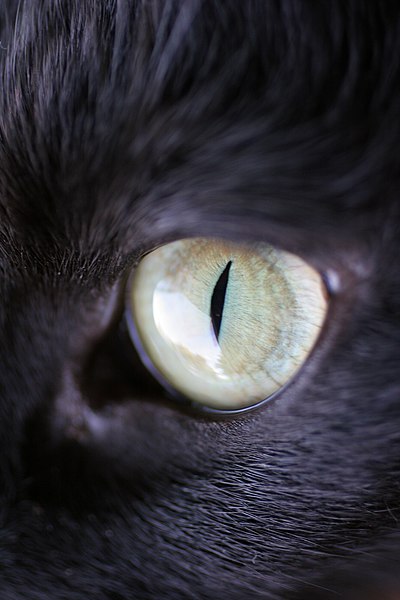.

Concentric rings in the planetary nebula NGC 6543 (Cat's Eye Nebula): Hubble Space telescope image by ESA, NASA, HEIC and The Hubble Heritage Team STScI/AURA, 2004 (NASA)
what is that bright constellation
seen in the western sky
tonight, brilliant in virginal late
cold deep cobalt above bay's
twinkling distant lights, the red
blinking signal of Coit Tower
infinite specific difference within
infinite overall sameness, as vision
present within its absence, the vivid
diatomic or bioluminescent
living phosphorescence
in the cat gods' eyes
seen in the western sky
tonight, brilliant in virginal late
cold deep cobalt above bay's
twinkling distant lights, the red
blinking signal of Coit Tower
infinite specific difference within
infinite overall sameness, as vision
present within its absence, the vivid
diatomic or bioluminescent
living phosphorescence
in the cat gods' eyes



My and my cat's eyes see your work with all our benevolence and pleasure.
ReplyDeleteIn the sameness that only the difference allows.
Thank you.
It is for your and your cats' eyes that it was intended, so this is definitely good news, Julia.
ReplyDeleteI was reluctant to imitate a science nerd in the attribution of the astronomical image, but the NASA description IS somewhat interesting... so, for those who might care, here it is:
"This NASA Hubble Space Telescope image shows NGC 6543, nicknamed the 'Cat's Eye Nebula,' one of the most complex planetary nebulae ever seen, with surprisingly intricate structures including concentric gas shells, jets of high-speed gas and unusual shock-induced knots of gas. Estimated to be 1,000 years old, the nebula is a visual 'fossil record' of the dynamics and late evolution of a dying star.
"A preliminary interpretation suggests that the star might be a double-star system. The suspected companion star also might be responsible for a pair of high-speed jets of gas that lie at right angles to this equatorial ring. If the companion were pulling in material from a neighboring star, jets escaping along the companion's rotation axis could be produced.
"These jets would explain several puzzling features along the periphery of the gas lobes. Like a stream of water hitting a sand pile, the jets compress gas ahead of them, creating the 'curlicue' features and bright arcs near the outer edge of the lobes. The twin jets are now pointing in different directions than these features. This suggests the jets are wobbling, or precessing, and turning on and off episodically.
"This color picture, taken with the Wide Field Planetary Camera-2, is a composite of three images taken at different wavelengths. (red, hydrogen-alpha; blue, neutral oxygen, 6300 angstroms; green, ionized nitrogen, 6584 angstroms).
"The image was taken on September 18, 1994. NGC 6543 is 3,000 light-years away in the northern constellation Draco. The term planetary nebula is a misnomer; dying stars create these cocoons when they lose outer layers of gas. The process has nothing to do with planet formation, which is predicted to happen early in a star's life."
Of course, behind the eye of any self-respecting cat would lie at least as interesting a history, if only we had a micro-view of all that lurks within...
I'm very grateful for the Hubble explanation (and, of course, for the wondrous Hubble instrument itself). The last sentence of your response to Julia says it all, as does:
ReplyDeletethe vivid
diatomic or bioluminescent
living phosphorescence
in the cat gods' eyes
In my house all day and all night ten pair of cats' eyes are trained on me fairly constantly from all directions. Such consistent regard by such a varied (big ones, little ones, light ones, dark ones), physically attractive audience in my currently shabby state sometimes makes me a little self-conscious. But they seem to like me and unlike someone in the house they've never once said to me, "not in those shoes you're not".
=) (This my response for your words, Tom and Curtis)
ReplyDeletethe scientific explanations are, for me, pure fantasy and incredulity
My sincere greetings to you and all your cats
One always feels the cats' eyes, though some look into one more deeply than do others.
ReplyDeleteOne lives in the fields of their senses, awkwardly, half unaware.
It's been very cold here, down to freezing these recent nights, and so, in the dark, it's the cat's thermal sensors that one can feel most strongly, operating quietly in the dark, as they maneuver for position upon warm bodies. (Broken ones will do as well as hale ones, in their dispassionate view.)
Tom,
ReplyDeleteinfinite specific difference within
infinite overall sameness, as vision
present within its absence. . . .
1.8
pink-red edge of grey cloud above still
shadowed trees, motionless green leaves
in foreground, sound of wave in channel
its position only if linear,
point in the same way
mass, rotate about the line,
motion of bodies that
silver of sunlight reflected in channel,
line of clouds on horizon next to point
infinite specific difference within
ReplyDeleteinfinite overall sameness, as vision
present within its absence. . . .
"That could be a description of Temporality as well," quoth A.